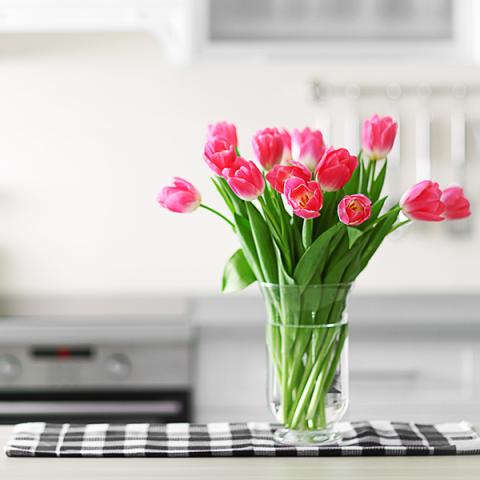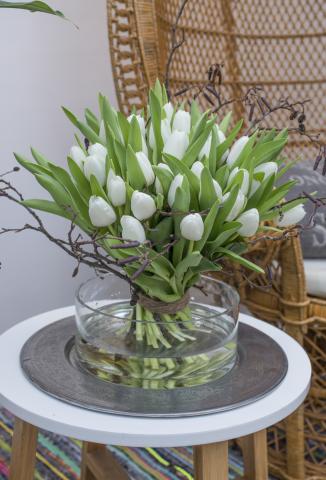What is stem elongation and how to avoid it?

If there is one flower species known to want to rise above all, it’s the tulip. Tulipa grow about 10 cm after cutting, during transport and whilst in the vase depending on the cultivar. Sometimes gerberas, anemone and antirrhinums also want to grow when cut and put in vases. Florists cannot do much to prevent this, growers can.
Most tulips tend to continue to grow after being harvested by the grower. This causes difficulties in combining tulips with other flowers in mixed bouquets, because they grow above the rest after a few days. Cut flower food also stimulates this growth.
Post-harvest treatment
The growing of the tulip stems can only be prevented when growers use a post-harvest treatment product. Chrysal has a product to prevent this tulip elongation: Chrysal BVB plus. It also enhances the vase life and prevents the leaves from yellowing.
Arrangement & design phase
Florists and consumers can’t do much about the elongation of tulip, gerbera and anemone stems in vases. Although you cannot control the elongation, you can take it into account when creating bouquets with these flowers. In some cases it can have a nice effect to have the tulips, gerbera’s or anemones rise above the bouquet. Always provide the customer information about the elongation of this – still very popular – spring flower.
When you give cut flower food (bulb) with it, mention that it stimulates stem elongation. Therefore it is always good to make the stems of these flowers a bit shorter than the rest.

